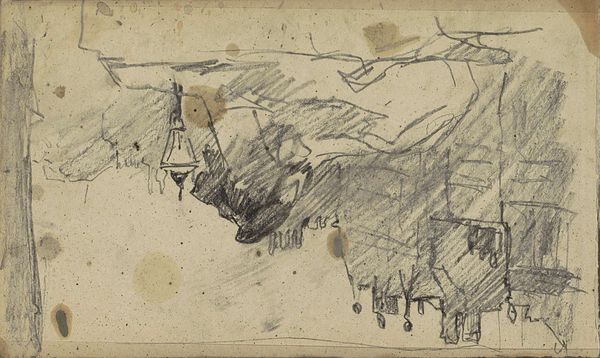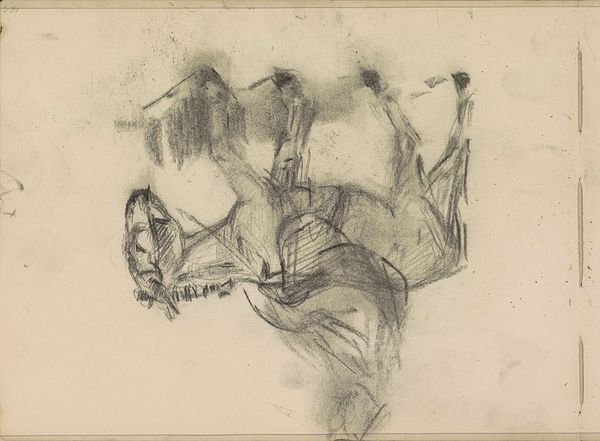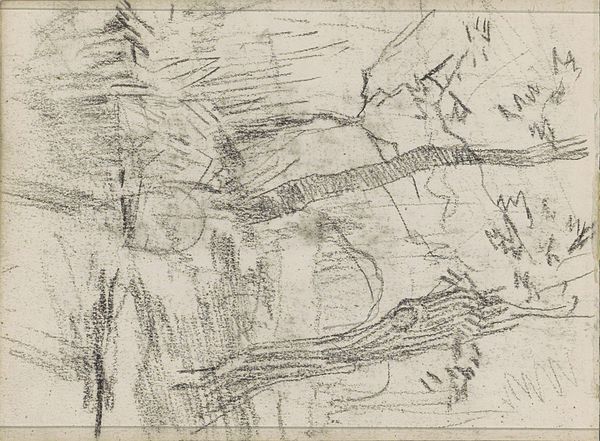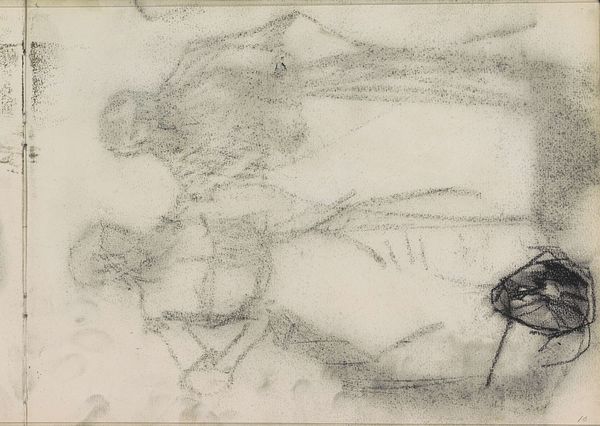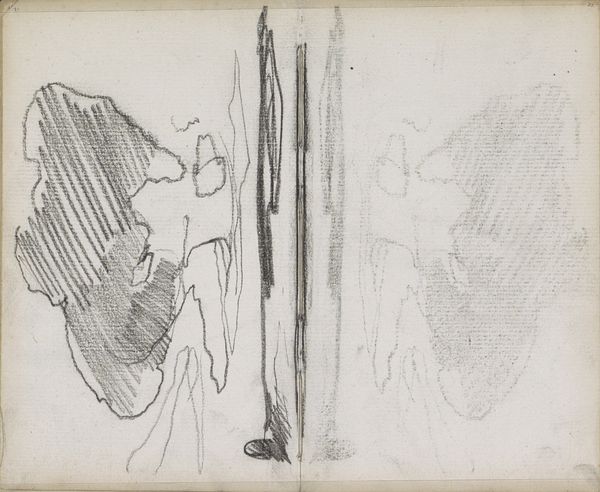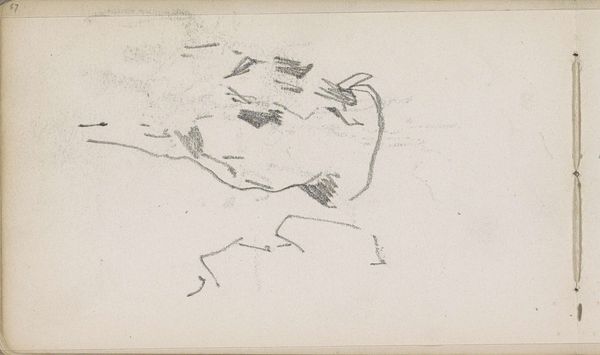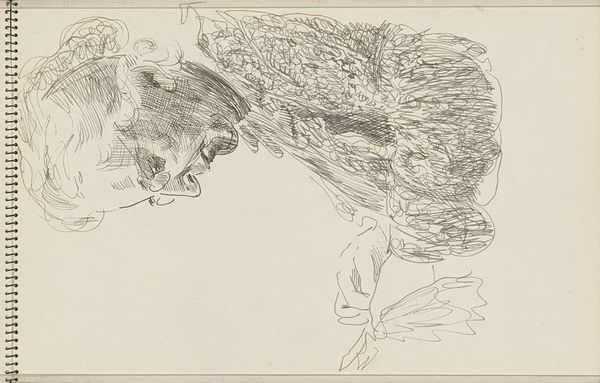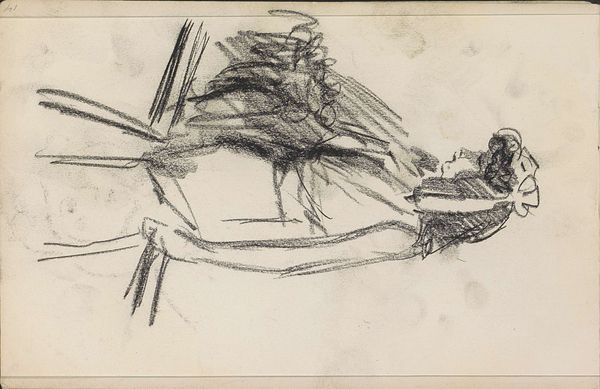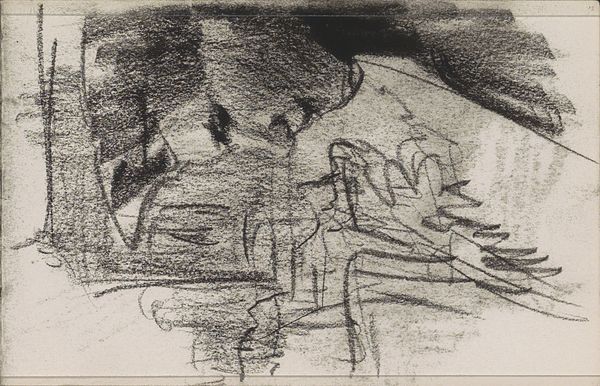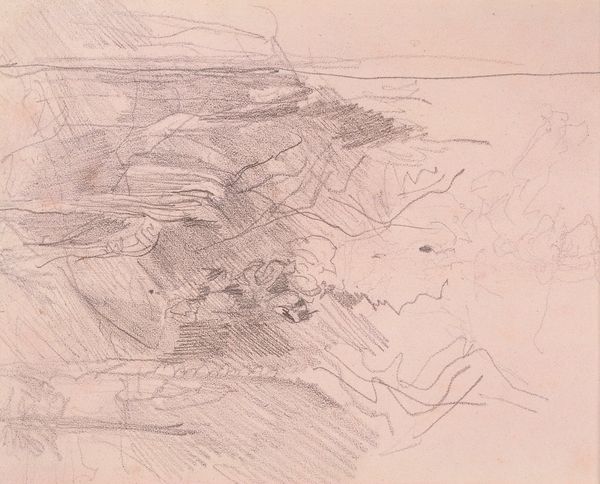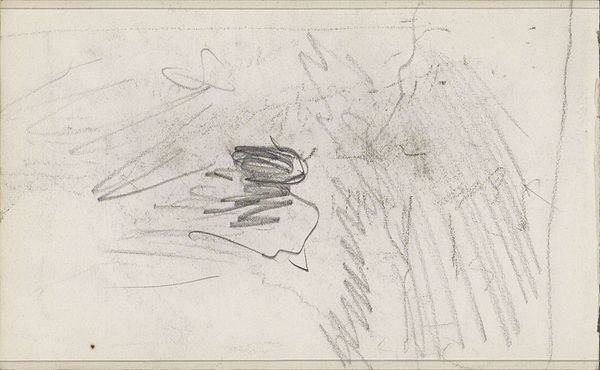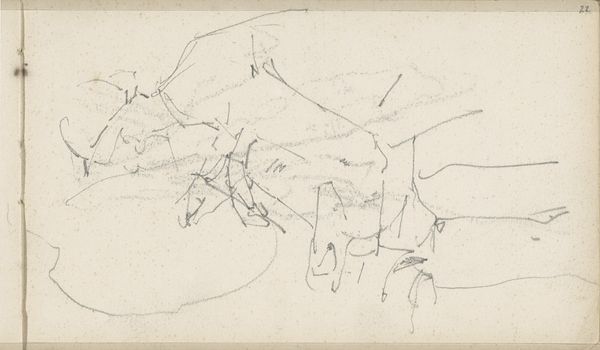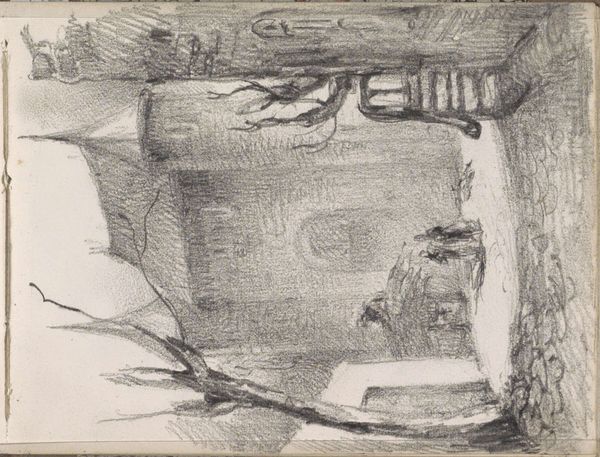
Copyright: Rijks Museum: Open Domain
Curator: Welcome. Before us is a drawing by Isaac Israels titled "Two Acrobats", made with pencil sometime between 1875 and 1934. It's currently held here at the Rijksmuseum. Editor: There's such a fleeting quality to this drawing. It feels unfinished, but deliberately so. I can almost feel the performers in motion. Curator: The visible pencil strokes speak to the labor involved in capturing fleeting movement. The unfinished quality you mention highlights the immediacy of its creation, it's almost journalistic in a way. Israels was concerned with documenting modern life, so the medium, the pencil, lent itself to sketching what he observed directly and efficiently. Editor: I’m drawn to the positioning of the figures. There's an echoing composition, as if the artist has frozen an evolving cycle of symbiosis and individual movement through the repeating gestures. Circuses held an interesting place in cultural symbolism too—they stood for both entertainment and spectacle, but also social displacement and the commodification of human skill. Curator: Exactly. The means of producing this form of public entertainment involved exploitation of labor. Israels was interested in observing how these workers conducted their trades. And pencil, being a readily accessible medium, underscores the relatively lower investment needed in creating art compared to say, oil paints and a large studio. His subject matter often mirrors the everyday lives of those working class citizens, such as these performers, in the margins. Editor: And within that choice, does the drawing then subtly echo and memorialize their physical acts of skill, recording the ephemeral motions into this singular impression? It gives a permanence to what would otherwise vanish. Curator: Precisely. The rough hatching used for shading indicates areas of the bodies where greater physical effort occurs. There’s also great tension present: this medium of mass reproducibility, that being the humble pencil sketch, capturing labor relations during a key shift from localized workshops toward urbanised methods involving human performance and entertainment as product. Editor: It is like a cultural x-ray of a moment in history. Thinking about these intersecting concepts—entertainment, economics, memory and craft—adds layers to this seemingly casual drawing. I walk away seeing the performers and feeling them, but also recognising the subtle cultural forces etched into each pencil stroke. Curator: Yes, viewing artwork with considerations of process and materials always reveals new insights that go far beyond the surface image itself.
Comments
No comments
Be the first to comment and join the conversation on the ultimate creative platform.
